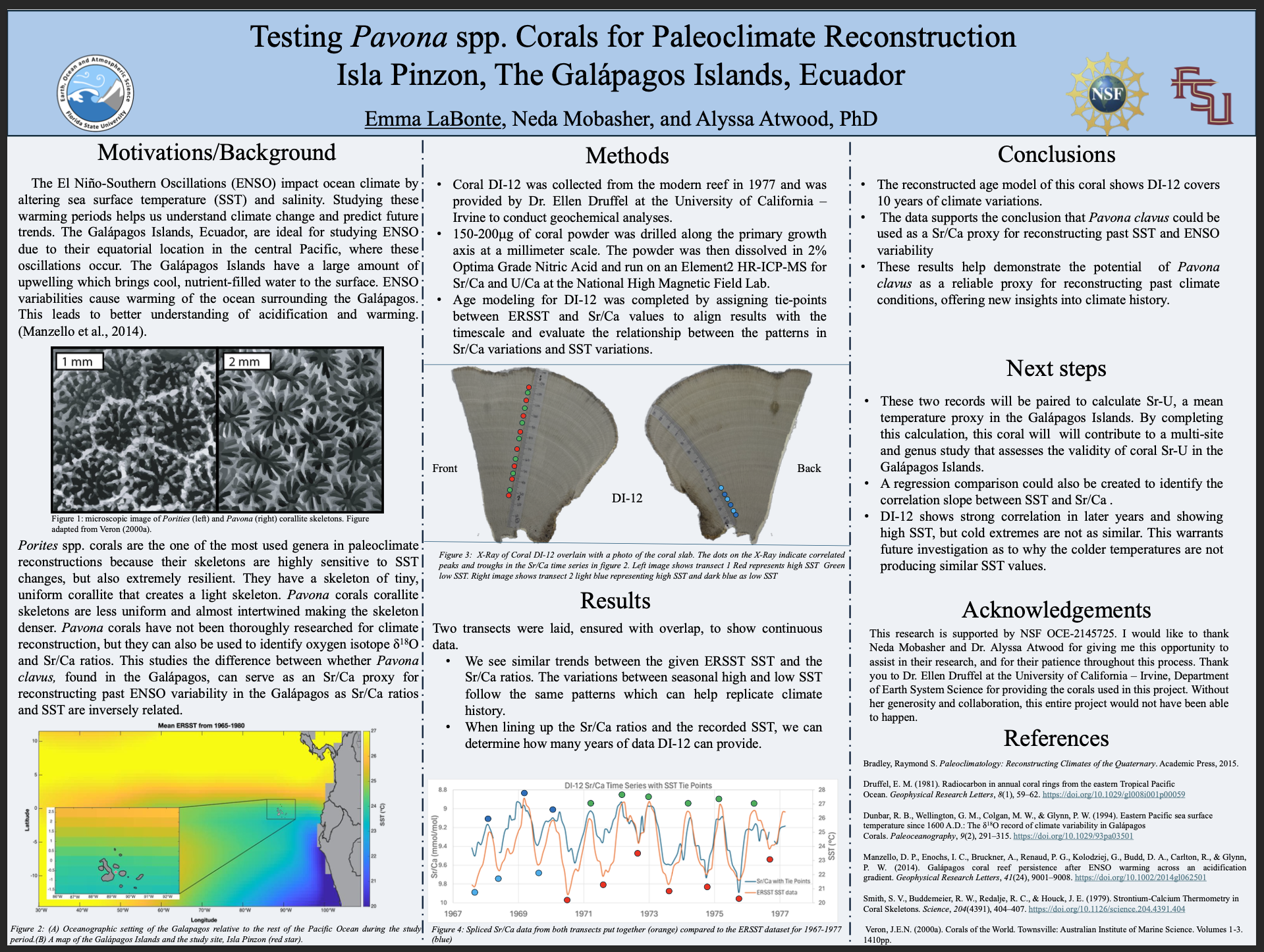Research Symposium
25th annual Undergraduate Research Symposium, April 1, 2025
Emma LaBonte Poster Session 1: 9:30 am - 10:30 am/ Poster #102

BIO
I am a Neuroscience major from Tampa, Florida. I love doing research and have spent the last year studying climate reconstruction from coral fossils in the Atwood Lab at FSU. I hope to study neurological disorders in the future!
Testing Pavona spp. Corals for Paleoclimate Reconstruction Isla Pinzon, The Galápagos Islands, Ecuador
Authors: Emma LaBonte, Neda MobasherStudent Major: Neuroscience
Mentor: Neda Mobasher
Mentor's Department: EOAS Mentor's College: College of Arts and Sciences Co-Presenters:
Abstract
Scleractinian (“stony”) corals are valuable archives that track past SST variability before direct measurements were available through variations in the geochemical composition of their aragonite skeletons. In the Galápagos Islands, Porites corals have been used to track long-term variations in the El Niño-Southern Oscillation (ENSO) because they are long-lived, slow-growing, and have clear seasonal banding patterns. At the Galápagos Islands, the Equatorial Undercurrent (EUC) shoals cause a massive upwelling of cold water to the surface ocean. Additionally, trade winds along the equator significantly affect the strength of the surface currents in this region, making conditions in the Galapagos significantly colder than in other parts of the tropical Pacific.
These oceanographic conditions make Porites highly sensitive to changes in ENSO variability, causing significant stress and mortality on corals in the Galapagos Islands. Pavona corals are similarly sensitive in the Galápagos but have not been as thoroughly researched in recording past climate variability. For this project, two Pavona clavus corals collected from the living reef in the 20th century were provided by Dr. Ellen Druffel at the University of California – Irvine to develop paleoclimate reconstructions of the 20th century. The corals, collected from Urbina Bay (0.988° S, 91.420° W) in 1954 and Isla Pinzon (0.609°S, 90.723°W) in 1977 are being analyzed for d18O, Sr/Ca, and U/Ca. These reconstructions are contributing to a spatial reconstruction of ENSO variability in the Galápagos Islands and will help determine if Pavona is a viable genus to develop climate reconstructions to include multiple genera.
Keywords: Corals, Fossils, Climate, Ocean


